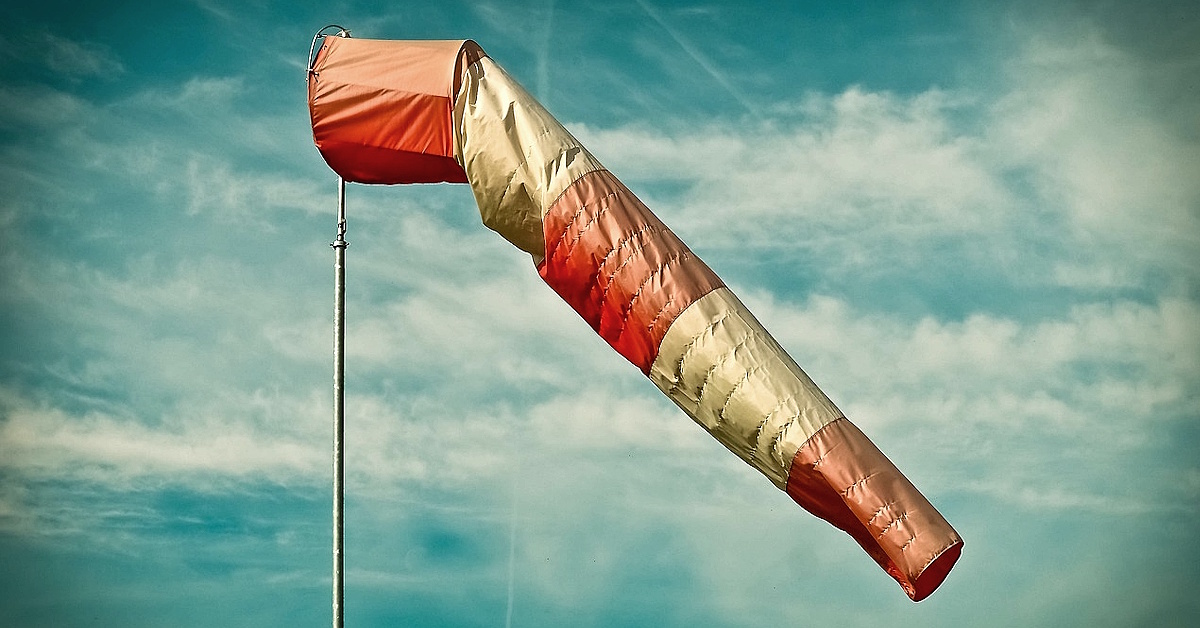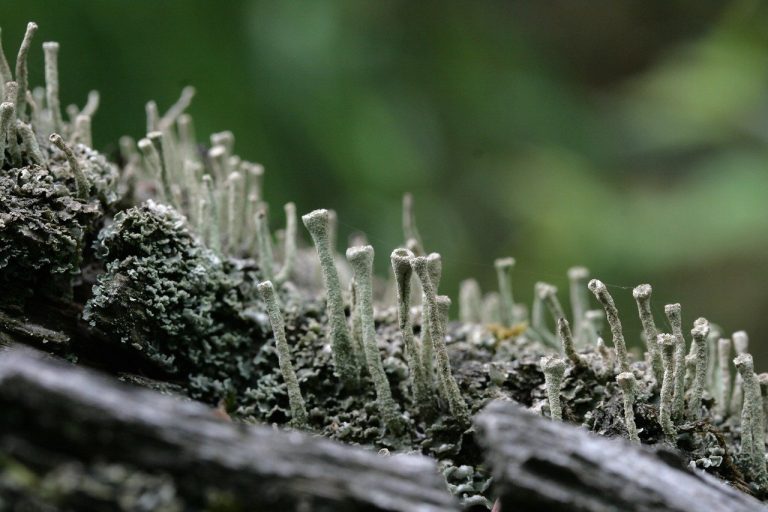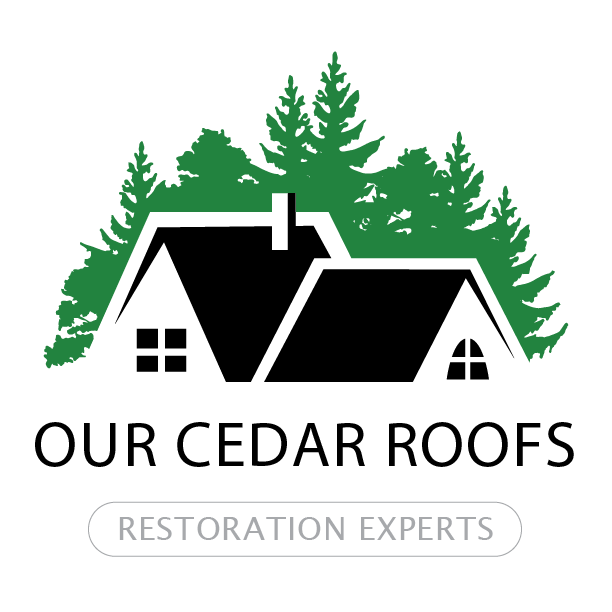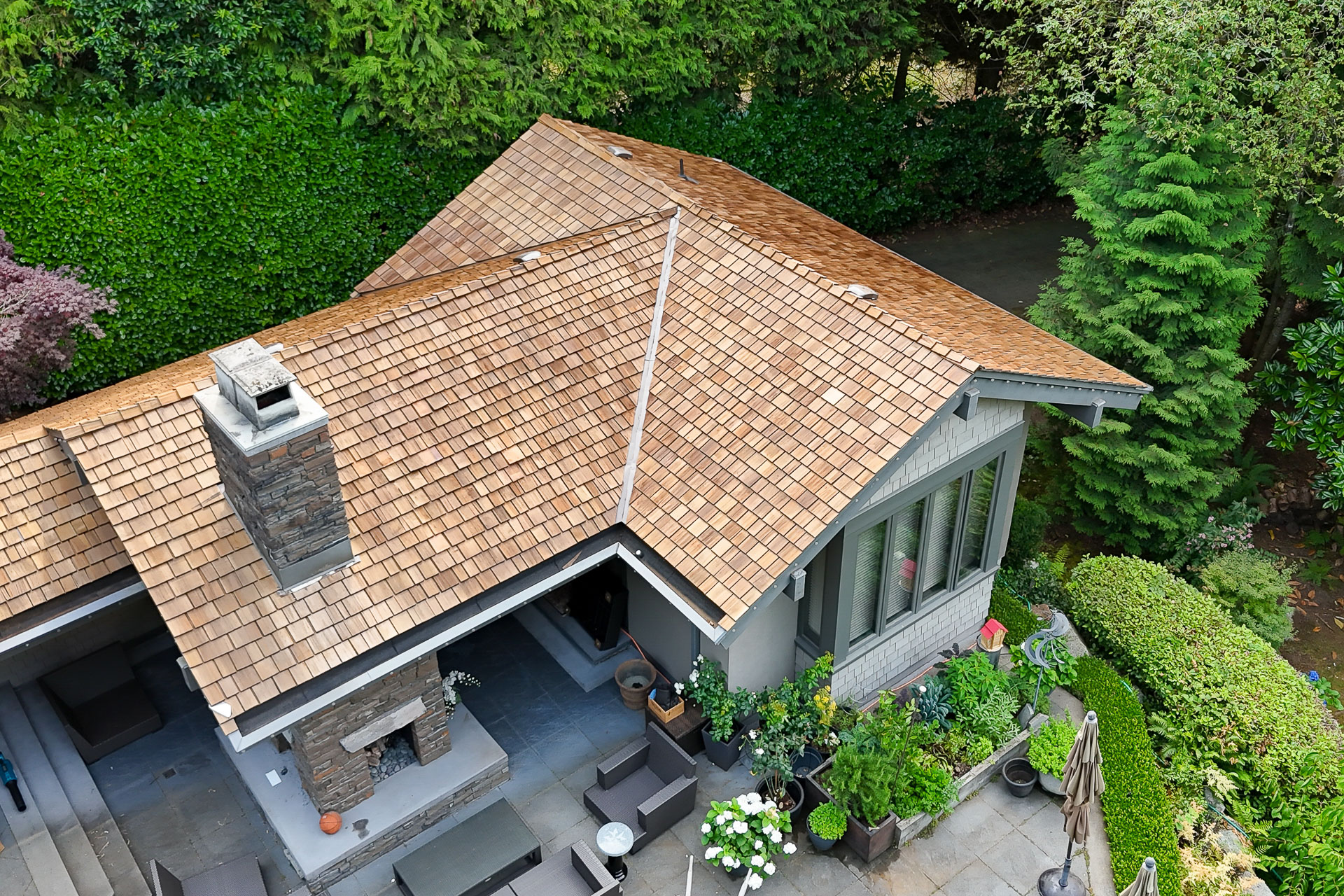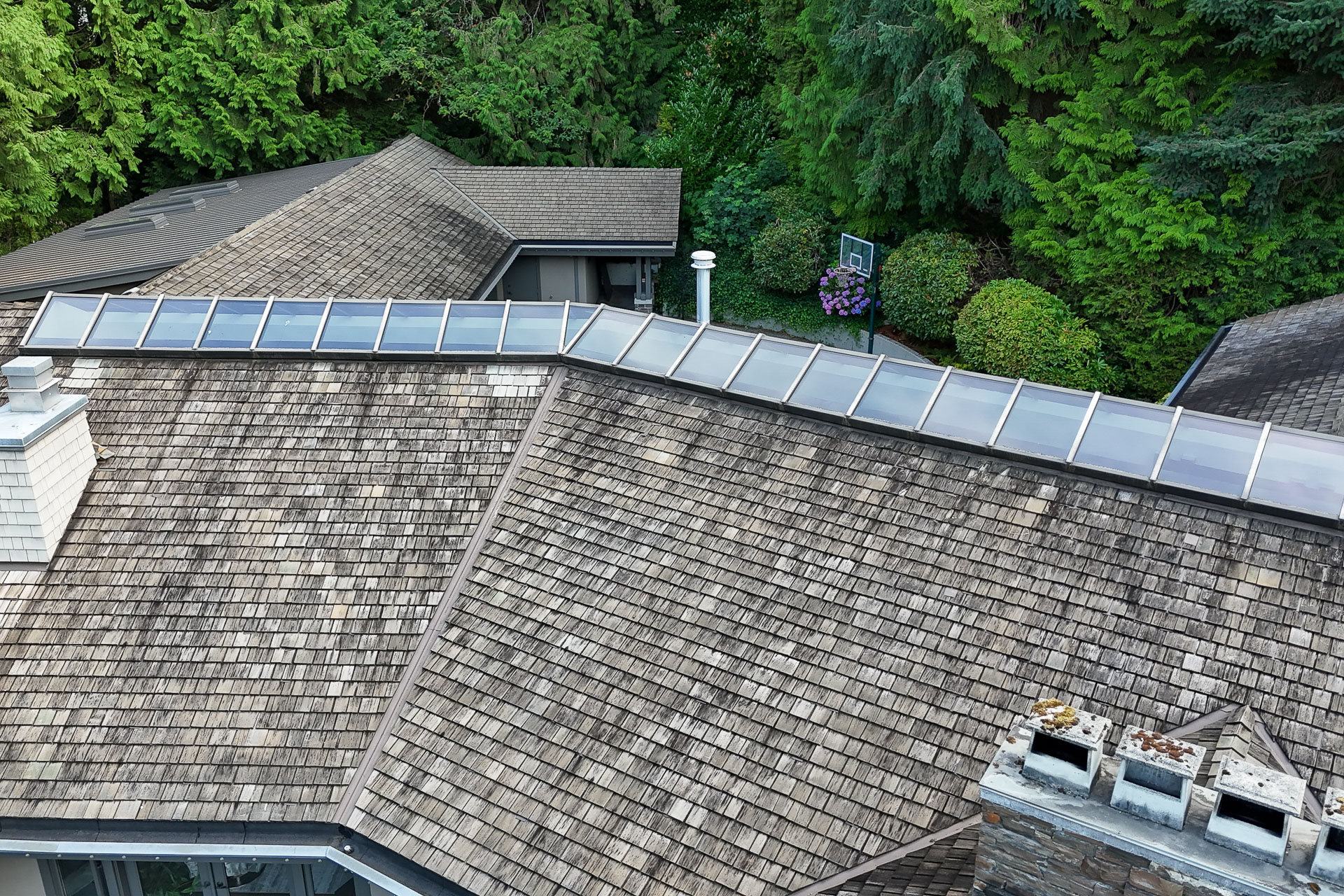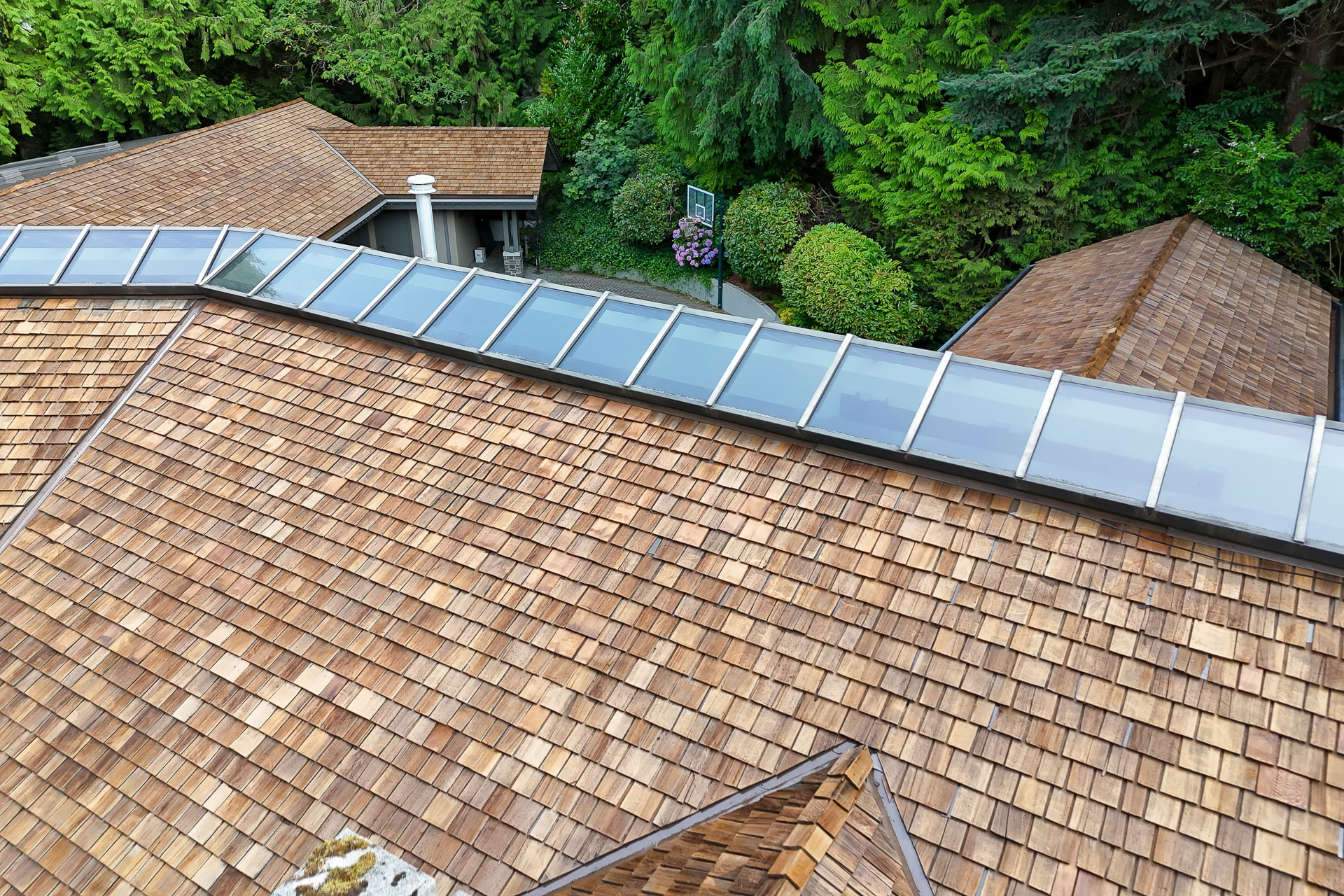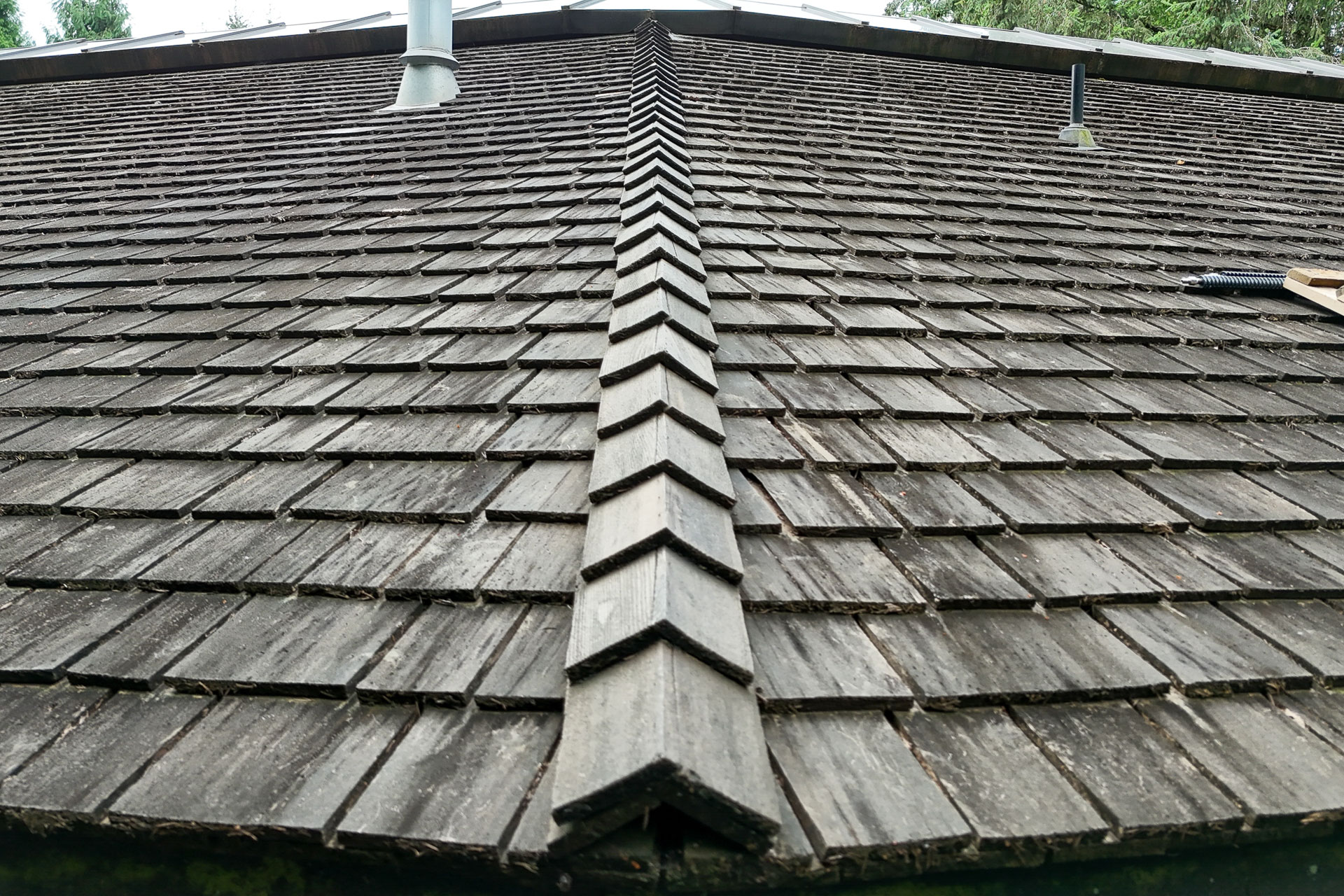The positive and negative effects of wind on cedar roofs
Learn about the positive and negative effects of wind on cedar roofs.
Wind can have a range of effects on cedar roofs, depending on the strength and frequency of the winds, the quality of the roof’s installation, and the overall maintenance of the roof. While cedar is a durable material, like any roofing system, it can be vulnerable to wind damage under certain conditions. Here’s an overview of how wind affects cedar roofs:
Positive Effects
- Drying and ventilation: Wind can help dry out the cedar roof, particularly after a rain or snowstorm. Adequate airflow promotes proper ventilation, which can help prevent moisture from becoming trapped in the shingles. This reduces the risk of mold, mildew, and rot that could otherwise develop if the roof remained damp for long periods.
- Prevention of moss and algae growth: Wind can help keep the roof free from leaves, branches, and other debris that might otherwise promote the growth of moss, algae, or fungi. A clean roof is less likely to suffer from issues like water retention or discoloration caused by biological growth.
Negative Effects
- Blown-off or damaged shingles: High winds, especially those associated with storms, can lift or blow off cedar shingles if they are not properly secured or if they are aging and brittle. This is particularly problematic with older cedar roofs that may have lost some of their natural flexibility and strength. Once shingles are lifted or damaged, the underlying roofing material can become exposed to the elements, leading to leaks and water damage.
- Wind-driven rain: Strong winds can drive rain horizontally, forcing water into vulnerable areas of the roof. Even though cedar shingles are designed to shed water, wind-driven rain can cause water to penetrate under the shingles or into gaps between them, leading to water damage, rot, or leaks. Over time, repeated exposure to wind-driven rain can degrade the wood, especially if it’s not maintained properly.
- Splitting or cracking: Wind can cause cedar shingles to flex and bend, especially during strong gusts. Over time, the constant bending and movement can lead to cracking, splitting, or warping of the shingles. While cedar is naturally a flexible wood, excessive stress from high winds can damage the shingles, making them more susceptible to decay or moisture infiltration.
- Flying debris: Windstorms can carry debris such as branches, rocks, or even trash that can strike the roof. If debris hits the cedar shingles with enough force, it can cause physical damage, including cracks, dents, or punctures. The impact of such debris can compromise the protective layer of the roof, leaving it vulnerable to further damage from the elements.
- Damage to flashing and seals: Wind can also affect other components of the roof, such as the flashing around chimneys, vents, and skylights. If the flashing or seals around these areas are compromised by wind, water can seep into the roof structure, leading to leaks and potentially significant damage to the underlying wood and insulation.
Maintenance Considerations
- Regular inspections: It’s essential to inspect a cedar roof after periods of strong winds, especially if the area is prone to windstorms or hurricanes. Check for loose or missing shingles, cracks, and damage to flashing. Addressing minor issues promptly can prevent larger, more expensive repairs later.
- Regular inspections: It’s essential to inspect a cedar roof after periods of strong winds, especially if the area is prone to windstorms or hurricanes. Check for loose or missing shingles, cracks, and damage to flashing. Addressing minor issues promptly can prevent larger, more expensive repairs later.
- Re-secure loose shingles: If shingles have become loose or have started to lift, they should be re-secured promptly to prevent further damage. This may require replacing nails or adding additional fasteners to ensure the shingles stay in place during high winds.
- Trim overhanging branches: To reduce the risk of flying debris causing damage to the roof, trim any trees or branches that hang over the house. This minimizes the potential for branches to break off and hit the roof during a windstorm.
- Proper roof ventilation: Ensuring that the cedar roof is well-ventilated is crucial for preventing moisture buildup, which can be exacerbated by wind-driven rain. A well-ventilated roof system helps to regulate the temperature and humidity levels within the attic, reducing the risk of water damage.
- Sealant and protective coatings: Cedar roofs benefit from the application of high-quality sealants that can help protect the wood from wind-driven rain and prevent the penetration of moisture. These coatings can also increase the durability of the shingles, helping them withstand the stress of high winds.
Conclusion
While wind is a natural element that cedar roofs are designed to handle, high winds and gusts can lead to significant damage if the roof is not properly maintained or if the shingles are old and weakened. The most common issues include damaged or blown-off shingles, wind-driven rain infiltration, and the impact of flying debris. Regular inspections, proper maintenance, and preventive measures can help protect a cedar roof from the damaging effects of wind, ensuring it remains functional and durable for many years.
Thank you for reading this article and we sincerely hope it was useful and informative.
Our Cedar Roofs
Restoration experts
Sources & credits
Related articles
